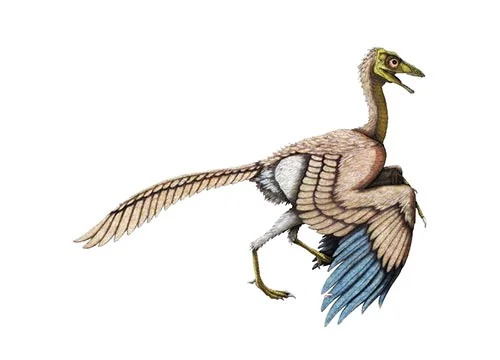Did dinosaurs have feathers?

As a paleontologist, I often get asked whether dinosaurs had feathers. The idea of feathered dinosaurs may seem strange at first, but the truth is that feathers have been discovered on a number of dinosaur species. In this blog post, we will explore the evidence for feathered dinosaurs and what this tells us about the evolution of these ancient creatures.
Evidence for Feathered Dinosaurs:
The first evidence of feathers on dinosaurs came in the late 1990s, when fossilized specimens of Sinosauropteryx were discovered in China. These fossils showed that the small, theropod dinosaur had a coat of primitive feathers covering its body. Since then, numerous other dinosaur species have been discovered with evidence of feathers or feather-like structures, including other theropods such as Velociraptor and Tyrannosaurus rex, and even non-theropod species like the ornithischian Kulindadromeus.
The discovery of feathered dinosaurs has led to a major shift in our understanding of dinosaur evolution. Previously, it was believed that birds evolved from small, ground-dwelling dinosaurs like Compsognathus. However, the discovery of feathered dinosaurs has shown that some dinosaurs were already experimenting with feathers long before the evolution of birds.
Types of Dinosaur Feathers:
Dinosaur feathers come in a variety of shapes and sizes, and can be divided into two main types: simple feathers, which are hair-like and unbranched, and complex feathers, which have branches or barbs. The simplest feathers were found on the earliest feathered dinosaurs, and are thought to have been used primarily for insulation. Complex feathers, on the other hand, are more bird-like in appearance and may have been used for flight, display, or other purposes.
While most feathered dinosaurs had simple feathers, some, like Microraptor and Anchiornis, had complex feathers that suggest they may have been capable of gliding or even powered flight. These discoveries have led to new theories about the evolution of flight, and have given scientists new insights into the origins of birds.
Implications of Feathered Dinosaurs:
The discovery of feathered dinosaurs has significant implications for our understanding of dinosaur evolution, as well as our understanding of the evolution of flight and the origins of birds. It has also challenged our traditional view of dinosaurs as being scaly, reptilian creatures. While not all dinosaurs had feathers, it is now clear that some species did, and that they played an important role in the evolution of these remarkable creatures.
Conclusion:
In conclusion, the evidence for feathered dinosaurs is now strong and widespread, challenging our traditional views of what dinosaurs looked like. The discovery of feathered dinosaurs has provided new insights into the evolution of flight, the origins of birds, and the evolution of these ancient creatures. As paleontologists continue to discover new fossils and study existing ones, we can look forward to even more exciting discoveries and a deeper understanding of the fascinating world of dinosaurs.
